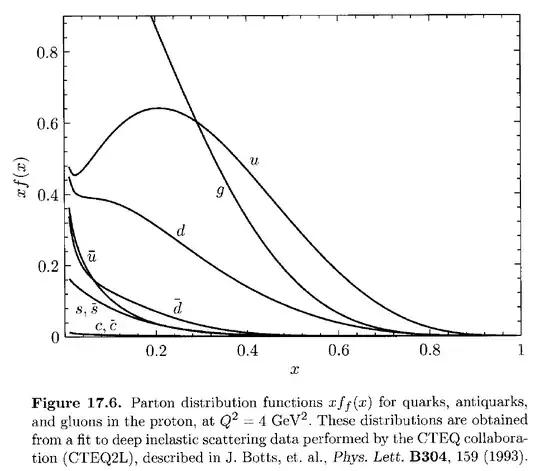The net mass-energy of bare quarks is a miniscule fraction of the bound system. A key fact to be noticed is that the force due to strong interaction does not decrease with increasing distance as in the case of electromagnetism. Another fact is that Heisenberg uncertainity is there.
Now we have a bound state of three quarks. For an easy comparision with electromagnetism, lets take a bound state of two quarks at first and later on we can move onto the case of three quarks.
So firstly, if two unlike charges are bounded by electromagnetism, then the coupling between them is less and falls down as inverse square with distance. As a result, for a system bounded by electromagnetism like the hydrogen atom, the distance is of the order of $10^{-10} m$ and there is no appreciable correction to the net mass of the the system as compared to the proton. {This depends on the magnitude of the charge too and is only a representative example}
Now if we take 2 quarks, then since the attractive force increases with distance, they form a bound system having a very small radius (Of the order of 1 fermi). Now Heisenberg uncertainity says that
$$\Delta x \Delta p \approx \hbar$$
Putting the values you can see that the quarks have a momentum uncertainity in the relativistic regime and have speeds close to light. This gives rise to extra mass of the quarks inside the bound state and is called the constituent quark mass.
Now finally we put 3 quarks in the system and get the proton. We can easily see that in order to hold these quarks together, we require that the potential energy should be greater than their kinetic energy. The potential energy in this case is provided by the gluon field, which gives rise to the remaining extra mass of the proton. Thus the proton is more heavy than the sum of individual quark masses.
